Answered step by step
Verified Expert Solution
Question
1 Approved Answer
In this activity, you will solve a problem that involves a real-world system where reactant quantities, product quantities, and gas volumes must be considered.
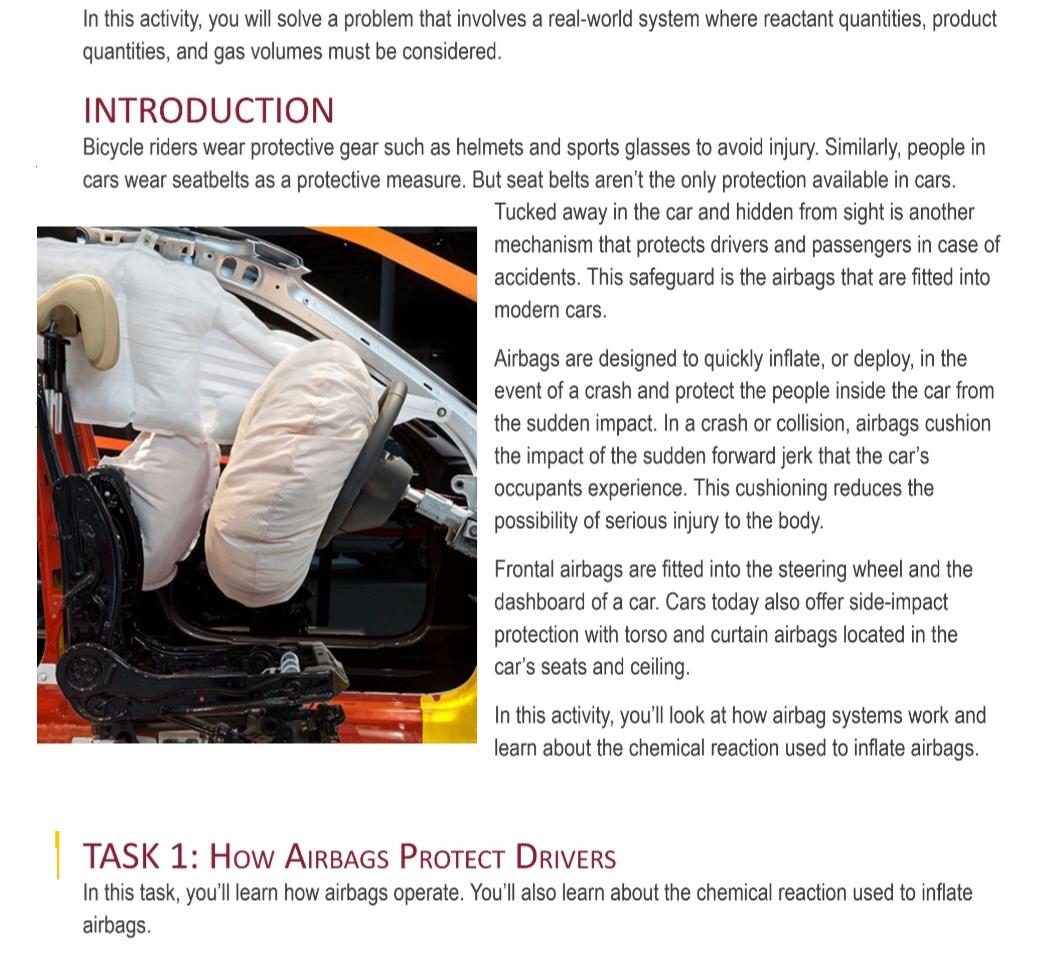
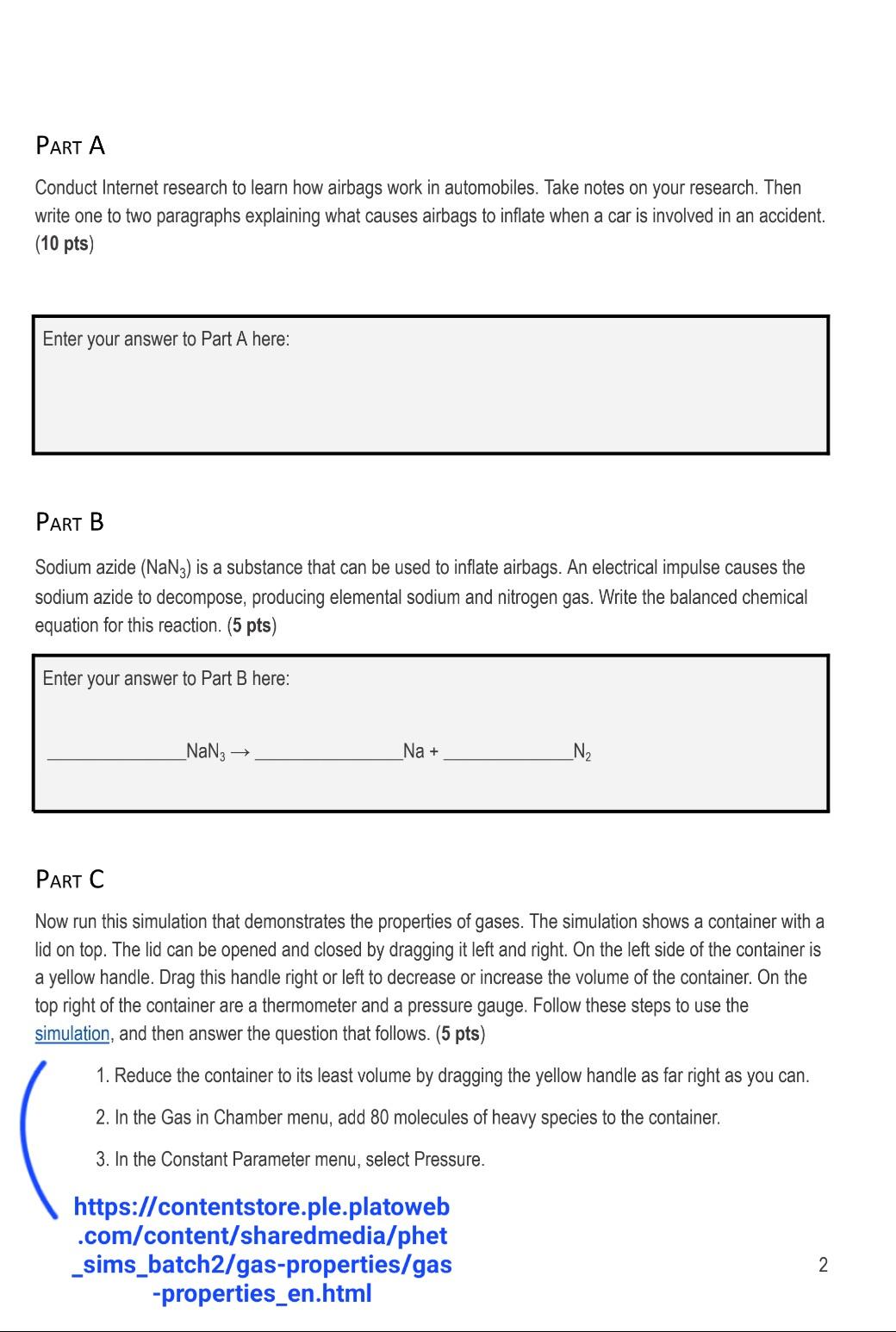
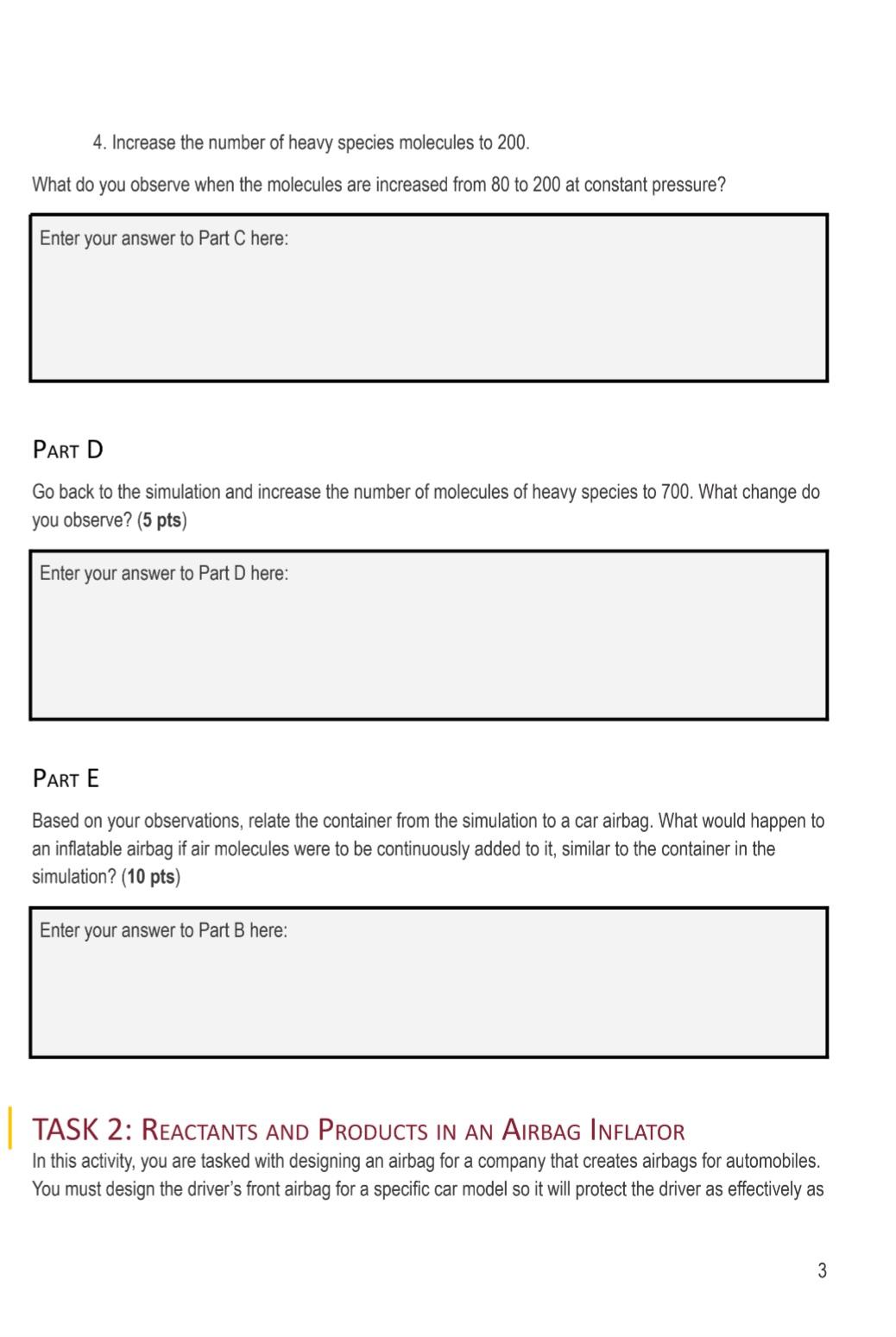
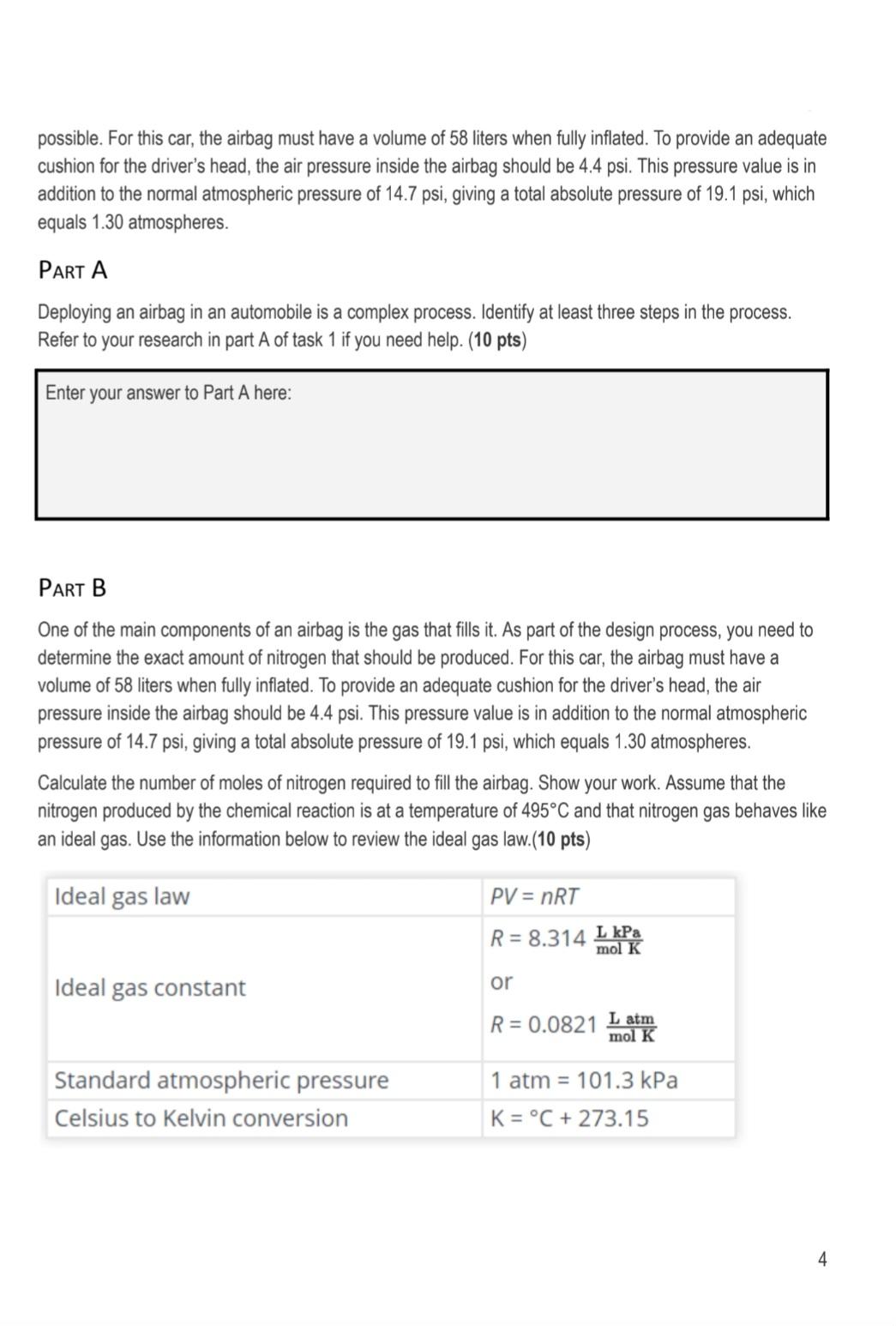
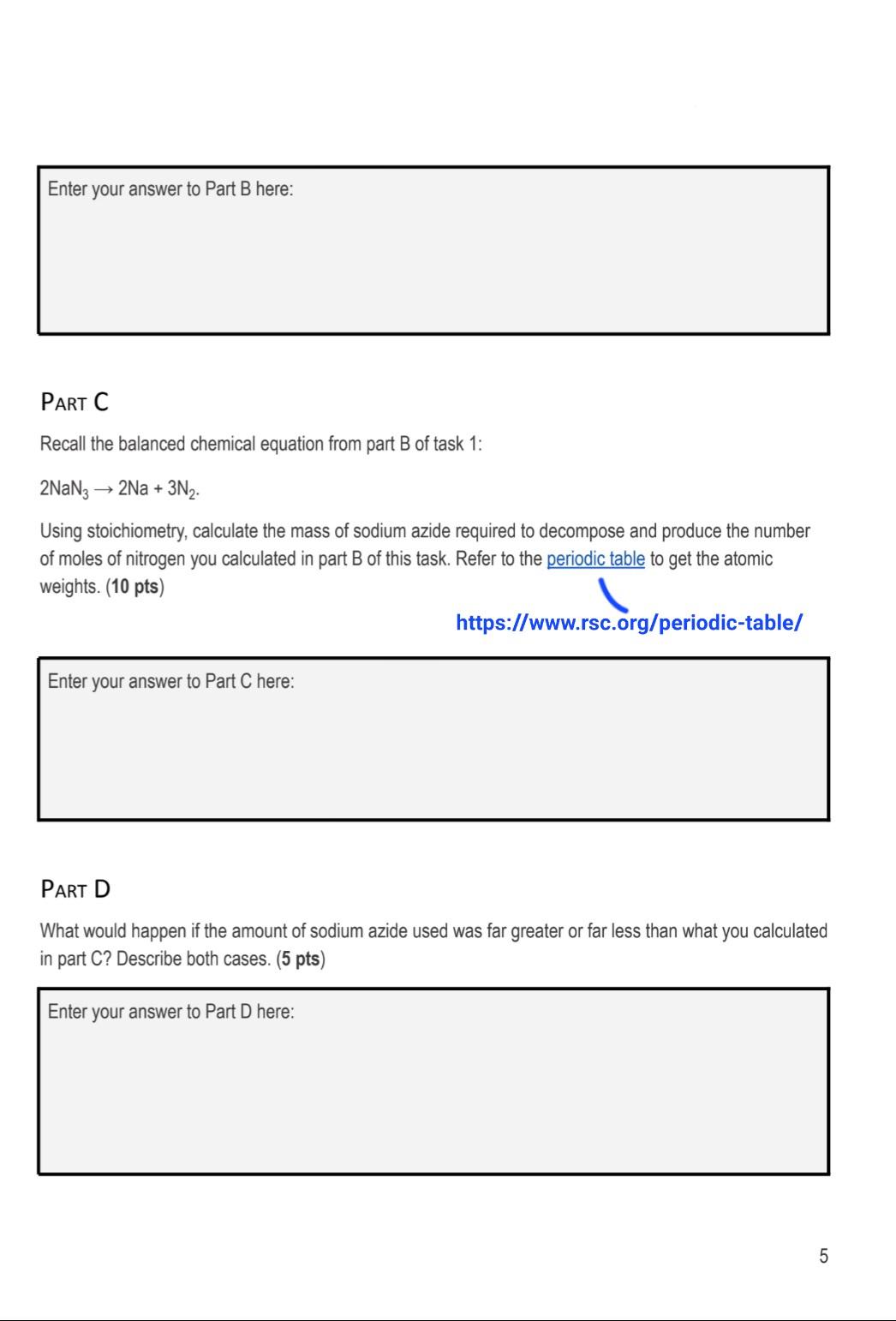
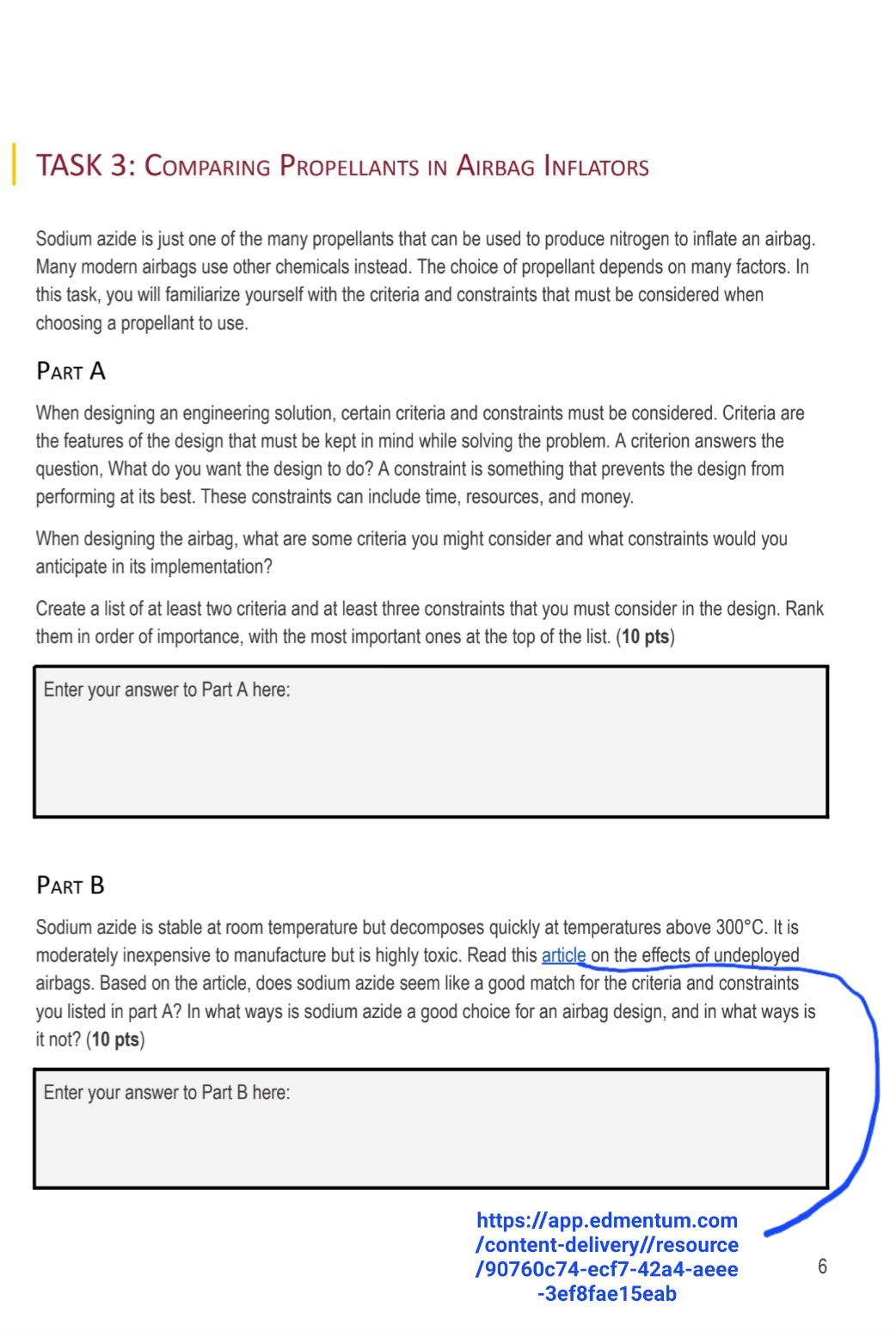
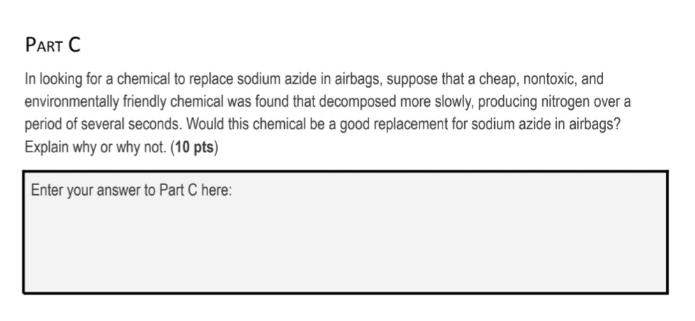
In this activity, you will solve a problem that involves a real-world system where reactant quantities, product quantities, and gas volumes must be considered. INTRODUCTION Bicycle riders wear protective gear such as helmets and sports glasses to avoid injury. Similarly, people in cars wear seatbelts as a protective measure. But seat belts aren't the only protection available in cars. Tucked away in the car and hidden from sight is another mechanism that protects drivers and passengers in case of accidents. This safeguard is the airbags that are fitted into modern cars. Airbags are designed to quickly inflate, or deploy, in the event of a crash and protect the people inside the car from the sudden impact. In a crash or collision, airbags cushion the impact of the sudden forward jerk that the car's Soccupants experience. This cushioning reduces the possibility of serious injury to the body. Frontal airbags are fitted into the steering wheel and the dashboard of a car. Cars today also offer side-impact protection with torso and curtain airbags located in the car's seats and ceiling. In this activity, you'll look at how airbag systems work and learn about the chemical reaction used to inflate airbags. TASK 1: How AIRBAGS PROTECT DRIVERS In this task, you'll learn how airbags operate. You'll also learn about the chemical reaction used to inflate airbags. PART A Conduct Internet research to learn how airbags work in automobiles. Take notes on your research. Then write one to two paragraphs explaining what causes airbags to inflate when a car is involved in an accident. (10 pts) Enter your answer to Part A here: PART B Sodium azide (NaN3) is a substance that can be used to inflate airbags. An electrical impulse causes the sodium azide to decompose, producing elemental sodium and nitrogen gas. Write the balanced chemical equation for this reaction. (5 pts) Enter your answer to Part B here: NaN 3 Na + N PART C Now run this simulation that demonstrates the properties of gases. The simulation shows a container with a lid on top. The lid can be opened and closed by dragging it left and right. On the left side of the container is a yellow handle. Drag this handle right or left to decrease or increase the volume of the container. On the top right of the container are a thermometer and a pressure gauge. Follow these steps to use the simulation, and then answer the question that follows. (5 pts) 1. Reduce the container to its least volume by dragging the yellow handle as far right as you can. 2. In the Gas in Chamber menu, add 80 molecules of heavy species to the container. 3. In the Constant Parameter menu, select Pressure. https://contentstore.ple.platoweb .com/content/sharedmedia/phet _sims_batch2/gas-properties/gas -properties_en.html 2 4. Increase the number of heavy species molecules to 200. What do you observe when the molecules are increased from 80 to 200 at constant pressure? Enter your answer to Part C here: PART D Go back to the simulation and increase the number of molecules of heavy species to 700. What change do you observe? (5 pts) Enter your answer to Part D here: PART E Based on your observations, relate the container from the simulation to a car airbag. What would happen to an inflatable airbag if air molecules were to be continuously added to it, similar to the container in the simulation? (10 pts) Enter your answer to Part B here: TASK 2: REACTANTS AND PRODUCTS IN AN AIRBAG INFLATOR In this activity, you are tasked with designing an airbag for a company that creates airbags for automobiles. You must design the driver's front airbag for a specific car model so it will protect the driver as effectively as 3 possible. For this car, the airbag must have a volume of 58 liters when fully inflated. To provide an adequate cushion for the driver's head, the air pressure inside the airbag should be 4.4 psi. This pressure value is in addition to the normal atmospheric pressure of 14.7 psi, giving a total absolute pressure of 19.1 psi, which equals 1.30 atmospheres. PART A Deploying an airbag in an automobile is a complex process. Identify at least three steps in the process. Refer to your research in part A of task 1 if you need help. (10 pts) Enter your answer to Part A here: PART B One of the main components of an airbag is the gas that fills it. As part of the design process, you need to determine the exact amount of nitrogen that should be produced. For this car, the airbag must have a volume of 58 liters when fully inflated. To provide an adequate cushion for the driver's head, the air pressure inside the airbag should be 4.4 psi. This pressure value is in addition to the normal atmospheric pressure of 14.7 psi, giving a total absolute pressure of 19.1 psi, which equals 1.30 atmospheres. Calculate the number of moles of nitrogen required to fill the airbag. Show your work. Assume that the nitrogen produced by the chemical reaction is at a temperature of 495C and that nitrogen gas behaves like an ideal gas. Use the information below to review the ideal gas law. (10 pts) Ideal gas law Ideal gas constant Standard atmospheric pressure Celsius to Kelvin conversion PV = nRT R = 8.314 L kPa mol K or R = 0.0821 L atm mol K 1 atm 101.3 kPa K = C + 273.15 4 Enter your answer to Part B here: PART C Recall the balanced chemical equation from part B of task 1: 2NaN 3 2Na+3N2. Using stoichiometry, calculate the mass of sodium azide required to decompose and produce the number of moles of nitrogen you calculated in part B of this task. Refer to the periodic table to get the atomic weights. (10 pts) Enter your answer to Part C here: https://www.rsc.org/periodic-table/ PART D What would happen if the amount of sodium azide used was far greater or far less than what you calculated in part C? Describe both cases. (5 pts) Enter your answer to Part D here: 5 TASK 3: COMPARING PROPELLANTS IN AIRBAG INFLATORS Sodium azide is just one of the many propellants that can be used to produce nitrogen to inflate an airbag. Many modern airbags use other chemicals instead. The choice of propellant depends on many factors. In this task, you will familiarize yourself with the criteria and constraints that must be considered when choosing a propellant to use. PART A When designing an engineering solution, certain criteria and constraints must be considered. Criteria are the features of the design that must be kept in mind while solving the problem. A criterion answers the question, What do you want the design to do? A constraint is something that prevents the design from performing at its best. These constraints can include time, resources, and money. When designing the airbag, what are some criteria you might consider and what constraints would you anticipate in its implementation? Create a list of at least two criteria and at least three constraints that you must consider in the design. Rank them in order of importance, with the most important ones at the top of the list. (10 pts) Enter your answer to Part A here: PART B Sodium azide is stable at room temperature but decomposes quickly at temperatures above 300C. It is moderately inexpensive to manufacture but is highly toxic. Read this article on the effects of undeployed airbags. Based on the article, does sodium azide seem like a good match for the criteria and constraints you listed in part A? In what ways is sodium azide a good choice for an airbag design, and in what ways is it not? (10 pts) Enter your answer to Part B here: https://app.edmentum.com /content-delivery//resource /90760c74-ecf7-42a4-aeee 6 -3ef8fae15eab PART C In looking for a chemical to replace sodium azide in airbags, suppose that a cheap, nontoxic, and environmentally friendly chemical was found that decomposed more slowly, producing nitrogen over a period of several seconds. Would this chemical be a good replacement for sodium azide in airbags? Explain why or why not. (10 pts) Enter your answer to Part C here:
Step by Step Solution
★★★★★
3.48 Rating (161 Votes )
There are 3 Steps involved in it
Step: 1
There has been an ongoing debate in Australia and internationally regarding the effectiveness of bic...
Get Instant Access to Expert-Tailored Solutions
See step-by-step solutions with expert insights and AI powered tools for academic success
Step: 2

Step: 3

Ace Your Homework with AI
Get the answers you need in no time with our AI-driven, step-by-step assistance
Get Started


